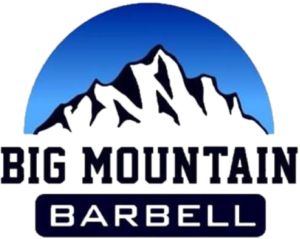If you’re pushing your body to get stronger, faster, or leaner, post-workout soreness is often worn like a badge of honor. At Big Mountain Barbell in Salt Lake City, our members and personal training clients take pride in working hard. But not all soreness is created equal. While some discomfort is a natural part of building strength, other types of pain may be early warning signs of dysfunction, strain, or imbalance. Knowing the difference can mean the difference between steady progress and a long-term setback.
This is where Physio Remedy (PR), our in-house service for movement evaluation and physical recovery, plays a vital role. By addressing problems early, PR can prevent minor issues from becoming major ones that derail your goals.
The Difference Between DOMS and Dysfunction
Delayed Onset Muscle Soreness (DOMS) typically peaks 24 to 72 hours after a tough workout. It’s a dull, achy, or tight feeling in the muscles you trained—especially if you increased volume, intensity, or tried a new movement.
Symptoms of normal DOMS:
- Generalized soreness across the muscle (not a sharp, pinpoint pain)
- Temporary stiffness or reduced range of motion
- No swelling or discoloration
- Improves with light activity, stretching, and time
On the other hand, pain that’s sharp, localized, persistent, or getting worse rather than better could signal:
- Strain or tear (muscle, ligament, or tendon)
- Joint dysfunction
- Nerve impingement
- Biomechanical imbalance
- Overtraining or under-recovery
Soreness that lingers for more than 4–5 days, worsens at rest, or limits your ability to perform everyday tasks isn’t just “part of the grind.” It’s your body asking for help.
When to Pay Closer Attention
Here are some red flags that your soreness may need more than ice and rest:
1. Asymmetrical Pain
If only one side of your body is hurting after bilateral movements (like squats or presses), that could indicate poor alignment or compensatory patterns. A movement screen through Physio Remedy can identify where your body may be “cheating” to complete the lift.
2. Pain That Interrupts Sleep
Waking up at night due to discomfort isn’t normal. Pain that interferes with sleep is often a sign of inflammation or irritation in deeper structures like tendons, joints, or nerves.
3. Soreness That Progresses Into Sharp or Shooting Pain
This may indicate a strain that’s worsening or a nerve issue (like sciatica or brachial plexus irritation). Ignoring this could lead to long-term mobility limitations.
4. Limited Range of Motion Beyond Muscle Tightness
If you can’t lift your arm overhead, rotate your neck, or bend down without pain—even a few days after your workout—it could be more than just tightness. Proper assessment is key before resuming normal training.
5. Recurring Injuries or “Problem Areas”
Do you always feel tight in the same hamstring? Does your shoulder flare up every time you bench press? Chronic patterns often stem from underlying movement dysfunctions that need intervention—not just rest.
Why Rest Isn’t Always the Solution
While taking a few days off can help short-term soreness subside, it won’t fix imbalances, mobility restrictions, or poor movement mechanics. In fact, continued training on top of dysfunction increases your risk for:
- Compensatory movement patterns
- Chronic inflammation
- Muscle overuse injuries
- Poor progress in strength or performance
That’s why early intervention is essential. With Physio Remedy (PR) at Big Mountain Barbell in Salt Lake City, you can address pain or restriction with hands-on support and targeted corrective strategies—without having to stop training altogether.
What Happens During a Physio Remedy Session?
At Big Mountain Barbell, our Physio Remedy sessions are tailored for athletes, lifters, and everyday movers. Here’s what a typical PR experience includes:
- Movement Assessment: We look at how you squat, hinge, push, pull, rotate, and walk—identifying compensations and areas of restriction.
- Manual Therapy: Soft tissue work and joint mobilization help reduce tension and improve mobility.
- Neuromuscular Re-education: Exercises to retrain your body’s motor patterns and restore efficient, pain-free movement.
- Recovery Strategies: Personalized protocols including mobility drills, load management, and tissue recovery techniques.
These sessions are ideal whether you’re dealing with pain, want to optimize your lifting technique, or just want to future-proof your body against injury.
Why It Matters for Lifters and Everyday Athletes
In the gym world, we’re often taught to “push through it.” But the reality is, no PR is worth pushing past an injury that could’ve been prevented. Whether you’re training for a meet, getting stronger for fun, or using fitness to support your health, your longevity matters.
When you understand what your body is trying to tell you—and when you take action—you’re not only protecting yourself from setbacks but improving your long-term performance. That’s the real win.
If your soreness feels “off” or you’ve been managing the same nagging pain for weeks, don’t ignore it. Let’s get ahead of it—before it becomes something that keeps you out of the gym.
For customized movement assessments, recovery sessions, or performance therapy, give us a call at 801-200-3471 or request a quote.
Big Mountain Barbell in Salt Lake City offers personalized Physio Remedy (PR) sessions to help you move, train, and recover smarter—so you can keep chasing your goals with confidence.





